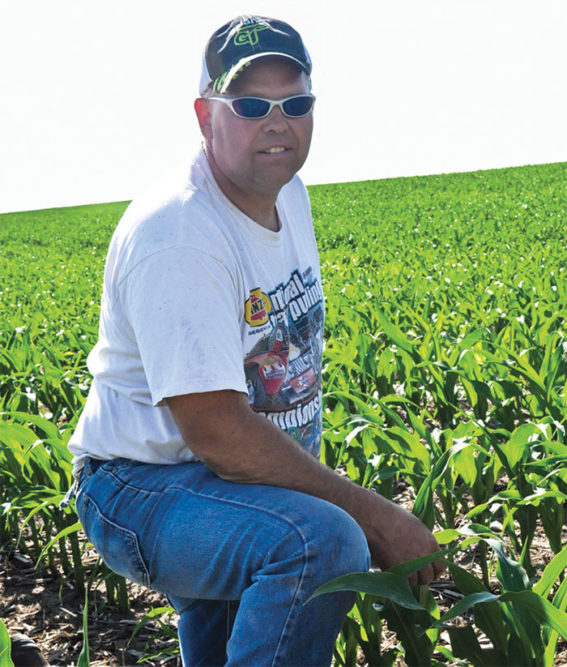No-Till Farmer
Get full access NOW to the most comprehensive, powerful and easy-to-use online resource for no-tillage practices. Just one good idea will pay for your subscription hundreds of times over.

STRONG BASE. Lancaster, Wis., no-tiller Joe Zenz plants his corn around 2¼ inches deep, deeper than the 1½ inches his conventional neighbors plant. While it does take longer for the crop to come up, Zenz says it allows the corn to have a stronger root system, which translates to higher yields.
For some farmers, no-till is all they know.
That’s the case for Joe Zenz, who took up the practice when he started farming 20 years ago. A neighbor of veteran no-tiller Maury McLean, Zenz joined an informal partnership with him and his son Paul in 1996, and learned how to no-till under McLean’s guidance.
Today, the Lancaster, Wis., no-tiller grows 1,800 acres of corn and soybeans, with typically 100 acres or more in corn-on-corn, and is focused on better planting and experimenting with different aspects of his no-till program to squeeze out more bushels per acre.
Like a lot of farmers, one of the biggest challenges Zenz has faced in recent years is the weather. He says the ideal time to start planting is around April 18, and his yield data history shows his best yields occurred when crops were planted before May 1. In the last 6-7 years, he’s only begun planting around May 1.
But when conditions are right, he keeps planting on time by using a John Deere 1770 planter for corn, and a John Deere 1560 no-till drill to seed his soybeans. This allows for both crops to be planted at the same…